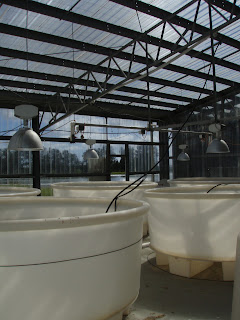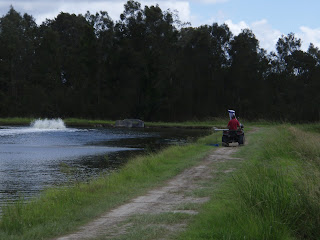The aquaculture department of the center is studying the convertibility of prawn hatcheries to fish hatcheries, especially looking at differences in Australian and Taiwanese designed hatcheries. In response to the collapse of the prawn industry primarily due to low cost (but low quality) imports and lack of government support of the industry as a whole, researchers are hoping to find a different outlet of profitable production for the hatcheries. There is potential for hatcheries to raise fish for the New South Wales government for recreational fish stocking or fish farming. One interesting thing to note is that in Australia all the hatcheries are private regardless of whether they raise for recreational fish stocking or private production, hatcheries just have to undergo an accredidation process.
This past Thursday we went to 2 different farms with prawn hatchery facilities in Yamba. Neither of the hatchery facilities on site are currently in operation however both are actively farming using purchased eggs instead of rearing their own. Tru Blu continues to farm prawns while Palmer Island Mulloway uses their ponds for Mulloway (Jewfish).
Tru Blu Farm
Tru Blu Hatchery Facilities (Australian Design)
The facilities have only ever been used for 3 runs of prawns, as the industry collapse occured shortly after the Tru Blu hatchery was built, most consider it to be the best hatchery in all of New South Wales
 |
| algae rearing tanks |
 |
More of the farming ponds
(Tru Blu has cut back to only farming half of their total ponds )
|
 |
Some of the praws they sell in their shop
|
 |
| Product Ready to go to the market |
 |
| Feeding the prawns |
Palmer Island Mulloway Hatchery Facilities (Taiwanese Design)

























